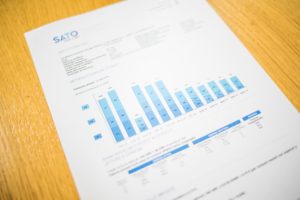Foreword
Do you know what Technical Analysis is? Technical Analysis is one of the major approaches that investors and traders rely on when determining the timing to jump into the financial market. Understanding how it works is essential to build your foundation in stock trading. In this article, I will walk you through what Technical Analysis is.
What is Technical Analysis?
Technical Analysis is an analysis methodology that allows traders or investors to spot and interpret trends, breakouts, and trend reversal from various chart compositions (also known as patterns). It can be used in both long-term investment and short-term trading. However, seldom do investors use technical analysis when analyzing the growth potential of a company, as it has nothing to do with the growth potential of companies.
On the contrary, Technical Analysis is indispensable when it comes to short-term trading. Short-term traders such as day traders or swing traders rely heavily on technical analysis. It allows them to make decisions quickly without going through companies’ financial papers. And helps them to make profits in a short time.
How do people use Technical Analysis?
Investors and traders both use Technical Analysis though they use it for different purposes and ways.
(That’s fine if you do not know what I am talking about in the following part. Be rest assured, I will explain more later)
Investors
Often, investors use both technical analysis and fundamental analysis before they even purchase stocks. They will first evaluate the growth potential of a company by going through its financial papers. Then, compare it with its competitors, look at the outlook of the company, and further judge they are investing in that company or not.

After they have made their decision to invest in the company. They will then use technical analysis to find the best timing to buy shares of a company. Usually, they purchase shares of a company when a downtrend starts to reverse or something happens, for example, a stock split.
Traders
Often, traders only use technical analysis when purchasing stocks. They will first draw lines (support and resistance) on charts with different time frames such as day chart, 5-min chart, 1-min chart, and more based on historical data. Then, when they see a breakout of the stock price, getting through the line (Support & Resistance).

They will buy and hold the stocks until the trend starts to reverse when the stock price cannot break the next resistance or when the stock price breaks the previous support.
The concept will be similar when doing short selling. Short sellers will short sell the stocks when the stocks are about to touch the resistance or have broken the support. If the uptrend did reverse or the downtrend did continue due to the selling pressure they create, they could profit from it.

In general, both investors and traders use Technical Analysis for the timing to get into the market.
How to do a Technical Analysis?
There is plenty of tools when doing technical analysis. But in common, traders will draw Support & Resistance lines, read patterns and use indicators when doing technical analysis.
Support & Resistance
Support and Resistance is one of the most common technical analyzing methods that traders or investors use when spotting and interpreting breakout, and reversal of the price of a security.

In theory, support and resistance are the same things. They both refer to a price level where a trend (up/down) is expected to be paused. In other words, the stock price is expected to bounce when it touches either a support or a resistance. If the stock price didn’t bounce and keeps its trend, the resistance/support it breaks will turns into support/resistance.
Related article: Technical Analysis: How to draw Support & Resistance Lines? Step by step
Patterns
Based on the Support & Resistance theory, people develop another way to do technical analysis on charts. And that’s is patterns (also known as chart composition).

Often, when traders see some patterns pop up in the chart, they will trade the security differently based on the meaning of each pattern they see.
Here are some common patterns.
| Common Patterns📈 | Bullish🐂/Bearish🐻? |
|---|---|
| 1️⃣ Double/ Multi Top | Bearish🐻 |
| 2️⃣ Double/ Multi Bottom | Bullish🐂 |
| 3️⃣ Ascending Triangle | (Often) Bullish🐂 |
| 4️⃣ Descending Triangle | (Often) Bearish🐻 |
| 5️⃣ Wedge | Could be 🐂/🐻 |
We did include and explain these patterns and the reason why these patterns are bearish or bullish in another article. Be sure to read it if you wish to know more.
Related Article: Technical Analysis: How To Read Pattern & Indicators?
Indicators
Apart from drawing support & resistance line and reading patterns from charts, traders often read indicators when trading.

Indicators are tools that allow people to visualize data easily. They make complicated things into a simpler form by using functions. Often, traders will trade the security differently based on what indicators shows them.
Here are some commonly used indicators.
| Commonly used indicators |
|---|
| Simple Moving Average (MA) |
| Exponential Moving Average (EMA) |
| Actual True Range (ATR) |
| Volume |
| Volume Weighted Average Price (VWAP) |
| Relative Volume |
We did include and explain what these indicators are calculating and how you can use it in another article. Be sure to check it out if you wish to know more.
Related Article: Technical Analysis: How To Read Pattern & Indicators?
Final Thought
Understanding how to do technical analysis of security is essential when it comes to trading or investing. In this article, I have briefly illustrated what Technical Analysis is and some basics when doing technical analysis. Hope you find this article helpful.
[Next Lesson: Technical Analysis: Support & Resistance]





